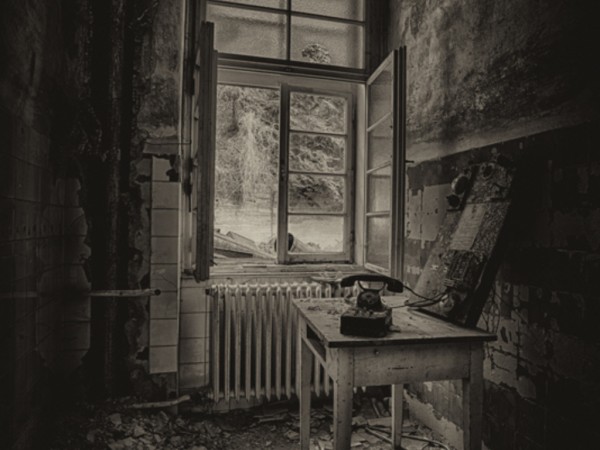In a way, its amazing that any of our photos survive. Its a cold hard world out there and photos are delicate, precious things. Father Time and Mother Nature’s parenting skills don’t help either, as heat, humidity and sunlight are all detrimental to the longevity of photos.
However, modern, sympathetic restoration techniques, can often fix seemingly irreversible damage.
- If your photos have suffered from any of the following:

"Danger, Danger" by Berkhamsted Imaging. © Some rights reserved. Used under Creative Commons BY_NC_SA licence.
Can't we just use this one and be done with it?
- pen marks,
- stains,
- paw prints,
- yoghurt or other surface blemishes,
- creases, rips or tears,
- mould and dirt,
- colour casts,
- sunlight damage,
- age-based yellowing,
- cracking or blemishes,
- faded or reduced colour and contrast and or
- paper degradation
then, we can restore it.
Sometimes, damage can happen without you noticing. For example, when a photo has been put in a frame, often only part of the photo will have been exposed to daylight. Gradually, over time, the daylight will act to "bleach" the colour from your photo. You probably won't notice.
The best plan is to bring the photo to us, still in its frame. We can then scan the original photo, if necessary, through the glass (which whilst not ideal, is a whole lot better than dealing with the devastating sort of damage that can result from carelessly removing a photo that has “stuck” to the inside of a glass frame.
Every photograph and every restoration is unique, so we treat each one individually.
We don’t have a set menu of prices for good reasons. We assess every photograph carefully, consider what will be required to restore it to the highest standard possible and price our work on the amount of time this will take.
Some things cannot be satisfactorily restored.
Most photo restorers won’t say this, because so much can be done and they’d rather their customers thought they had a magic wand/time machine. However, they don’t and there are, ultimately, limits.
If, for example, you were to set fire to a photo, handing the ashes to your friendly photo restorer won’t help. Whereas, a cigarette burn, will probably be repairable… unless, it obliterates a unique and sensitive part of the photo that cannot be substituted. So, a cigarette burn on a cloud: no problem. A cigarette burn on someone’s face (of whom, no other contemporary photo exists): a problem.
There is no substitute for a personal assessment of the damaged photo by an experienced restorer.
For years, we have restored photographs of all ages, all the way from Victorian prints right through to the modern day ones and this means that we know what needs to be done for a sympathetic restoration. Often, we see restoration work, that is presented as being “good”, because the result looks like a modern print. We’ve lost count of the number of times we’ve seen sepia photos from the 1920’s, printed in black and white on gloss paper. That’s a bit like, offering to restore granny’s bone china tea set and making you a cup from injection moulded plastic. OK, it looks similar and will last longer, but it’s a terrible idea.
Restoration, good restoration, is a subtle art. The highest compliment anyone can give a restoration is not realising it has been restored. If a photo looks restored, you can assume it is a bad restoration. Photos, especially restored ones, should be allowed to age gracefully. Less is more. Some photo restorers fastidiously remove every tiny speck of dust and every tiny sign of age from their restorations, without stopping to think why… and the result is a horrible, artificial pastiche of the original photo. What these restorations lack is authenticity and respect for the subject matter. A good restoration will preserve as much of the original photo as is possible, will not second guess the content of the original photo and will, insofar as possible, present the restored photo in a way that is authentic to the original (and its age). This is no room for flashy, flambouyant diplays by the restorer of their art. A good restoration will look, almost exactly the same as the original, minus the significant defects.
So, instead of showing you a gallery of our work, we’ll just walk you through a single worked example, with some explanations. Then, if you like, you can have a quick google at some other photo restorers’ galleries to see if they’re trying to sell you a plastic tea cup.
Oh, and finally, before we go, if you’ve got a print that you want restored, it’s worth checking that you don’t still have the negative for it.
We know, it sounds so obvious that it should go without saying, but you’ll be amazed how many other photo restorers don’t even bother to ask. They’ll launch straight into a long, complicated and expensive restoration, without checking. When film was king, people kept their negatives, so it’s always worth checking.
